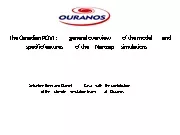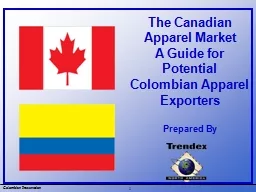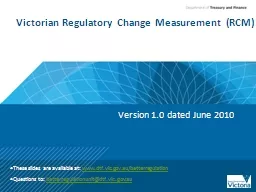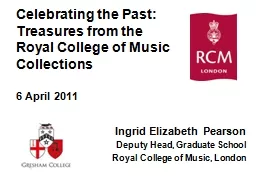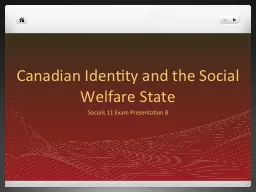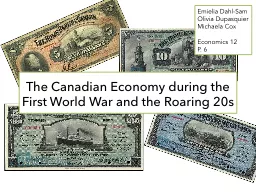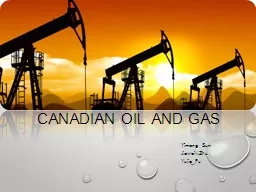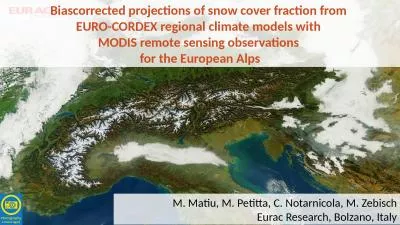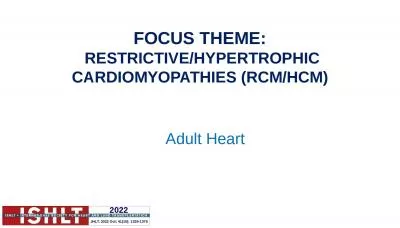PPT-The Canadian RCM : general overview of the model and specif
Author : min-jolicoeur | Published Date : 2016-03-21
Sébastien Biner and Daniel Caya with the contribution of the climate simulation team at Ouranos The Canadian RCM CRCM history Developped at the University of Québec
Presentation Embed Code
Download Presentation
Download Presentation The PPT/PDF document "The Canadian RCM : general overview of t..." is the property of its rightful owner. Permission is granted to download and print the materials on this website for personal, non-commercial use only, and to display it on your personal computer provided you do not modify the materials and that you retain all copyright notices contained in the materials. By downloading content from our website, you accept the terms of this agreement.
The Canadian RCM : general overview of the model and specif: Transcript
Sébastien Biner and Daniel Caya with the contribution of the climate simulation team at Ouranos The Canadian RCM CRCM history Developped at the University of Québec in Montréal during the 19912001 period. SPARRC Model Overview cont Version 2 developed in 2006 Version 2 developed in 2006 Interim release no external peer review Interim release no external peer review Model is not intended to Model is not intended to Establish regulatory requirements Es A Guide for Potential . Colombian Apparel Exporters. Prepared By. 1. 2. Purpose of today's presentation. Introduction. Describe what a . Colombian . apparel supplier has to do in order to enter and be competitive in the . Paul Arbo, CPA, CA, ACI. BDO Cayman Islands. Partner. Stephen B. White, CPA, CA. Kane Group. Business Development Director. Canadian Captive Historical Overview. Starting in late 1980’s the Canada-Barbados drove significant business to Barbados including captives, IBC’s and offshore banks.. Management. APAC Presentation. August . 26, 2013. Jim Florian, AVP Provost Office. Do you have a formula yet?. Questions People Ask. When will you be done?. How much will we make?. The Assignment From President Hart. Version 1.0 dated June 2010. These slides are available at: . www.dtf.vic.gov.au/betterregulation. . Questions to: . betterregulationunit@dtf.vic.gov.au. . Victorian Regulatory Change Measurement (RCM). Treasures from the. Royal College of Music Collections. 6 April 2011. Ingrid Elizabeth Pearson. Deputy Head, Graduate School. Royal College of Music, London. Spinet by Stephen Keene RCM 179. . first pages of . Socials 11 Exam Presentation 8. What makes Canada unique?. What do you think is special about Canada?. What makes Canada different from . US?. Gun control/violence: Canada has 30 guns/100 people. US has 88 guns/100 people. Symposium. April 2015. Agenda. General overview of RCM. Overview of the model and UA budget . composition. 2. General Overview of RCM. 3. RCM Basics. How is an RCM budget different than the current budget system?. Emielia. Dahl-Sam. Olivia . Dupasquier. . Michaela Cox. Economics 12. P. 6. Notable Dates . First World War. July 18. th. 1914 – November 11. th. 1918. The Roaring 20s. 1920-1929. Economic Theory Practiced . Readiness & Sustainability through Condition Based Maintenance Plus (CBM+) OSD CBM+ Senior Leaders’ Summit CDR Jesse Black 27 November 2018 America ’ s Navy: The Next Generation 2 NAVSEA CBM+ BLUF Sun . Jiawei Zhu. Yujia. Fu. Agenda. Industry overview. Global oil & Canadian oil industry. Global natural gas & Canadian natural gas industry. Risk Management . Forecasting Industry. Canadian Natural . EURO-CORDEX regional climate models with . MODIS remote sensing observations . for the European Alps. M. Matiu, M. Petitta, C. Notarnicola, M. Zebisch. Eurac Research, Bolzano, Italy. Motivation. Traditional . Adult Heart. 2022. JHLT. 2022 Oct; 41(10): 1335-1375. Table of Contents. Number of Deceased Donor Transplants and Characteristics of Transplants: slides . 3-14. Immunosuppression and Rejection: . slides . M.A. . Venkataramanan. RCM at Indiana University. RCM introduction at IUB. Overview philosophy and guiding principles. Advantages & Disadvantages. Allocation of major revenue sources. Assessments: Allocation of central expenses.
Download Document
Here is the link to download the presentation.
"The Canadian RCM : general overview of the model and specif"The content belongs to its owner. You may download and print it for personal use, without modification, and keep all copyright notices. By downloading, you agree to these terms.
Related Documents

